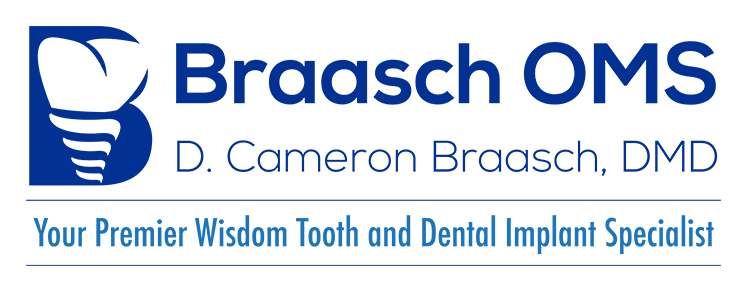What is the Dental Implant Process?

If you have damaged or missing teeth, you may lack confidence. You may be unable to eat the food you want or publicly share your smile. Using advanced procedures and materials, dental implants can help you regain a healthy smile.
Many patients have questions about receiving dental implants. This blog will explain each step of the dental implant process in detail, letting you know what to expect from your treatment.
How Dental Implants Work
A dental implant is a tiny titanium anchor that bonds with the jawbone, creating a rock-solid base to which a dental crown, bridge, or denture can be attached.
Parts of a Dental Implant
Anchor
The biocompatible implant anchor replaces the tooth's root system. In osseointegration, the anchor tightly bonds with the jawbone, providing the chewing stimulation the bone needs to stay healthy and strong.
Abutment
The abutment is a small stainless steel cap that fits over the anchor. It protects the anchor and provides an attachment point for the restoration.
Restoration
A crown, bridge, or denture replaces the tooth and completes the restoration.
The Single-Tooth Dental Implant Process
The process of receiving a dental implant may seem intimidating. Oral surgeons are most qualified to perform this delicate surgery and ensure a strong and healthy implant.
Step 1: Consultation
Before starting the dental implant process, you will meet your oral surgeon and discuss your needs. Your surgeon will provide a thorough examination, including digital imaging scans and a CBCT (Cone Beam Computed Tomography) scan. These scans help the surgeon determine whether your jawbone is robust enough for a dental implant.
Step 2: Extraction
You may need teeth extracted as part of the dental implant procedure. In many cases, Dr. Braasch can extract teeth and place the dental implant anchor during the same visit.
Step 3: Bone Grafting
You may need a bone graft procedure if your jawbone needs extra height or volume to accommodate the implant anchor. The surgeon makes an opening in the jawbone, inserts a ground and sterilized bone matrix, and then covers it with a dissolvable membrane. Over a few months, the inserted material provides a scaffold-like structure for new, healthy bone.
Step 4: Anchor Placement
The surgeon uses specialized tools to make a small opening in the gum and jawbone and then inserts the anchor. The anchor must heal for a few months before proceeding to the next steps.
Step 5: Abutment Placement
After the anchor completes healing, the surgeon reopens the gum and attaches an abutment to the top of the anchor. They secure the gum around the abutment to provide a place to attach the restoration.
Step 6: Restoration
A prosthodontist or general dentist supplies the dental crown that completes your implant.
Advantages of Dental Implants
Long-Lasting
With excellent care, a dental implant anchor may last a lifetime. However, the restoration on top will likely need periodic replacement.
No Dietary Restrictions
Patients with dental implants can once more enjoy their favorite foods without worry.
Raise Your Self-Confidence
When you have a complete smile, you'll feel more like yourself, and you may encounter more personal and professional opportunities.
Better Oral Health
Filling gaps in your smile is more than cosmetic. It also reduces your chance of developing tooth alignment problems, bite issues, tooth decay, and gum disease.
Tips for Success With Dental Implants
- If you grind your teeth, request a dental night guard to protect your crowns from excessive wear.
- Brush and floss as you would with healthy, natural teeth.
- Quit smoking and limit your alcohol use. Smoking can interfere with healing and cause implant failure.
Frequently Asked Questions About Dental Implants
Is dental implant surgery uncomfortable?
Dental implant surgery may seem intimidating, but advanced techniques and local anesthesia make the process comfortable. Many patients opt for sedation during surgery so they can relax.
What can I eat while healing from dental implant surgery?
Eat a soft diet, with foods like mashed potato, scrambled eggs, and pasta. As you heal, you can add firmer foods. Avoid crunchy or spicy foods until your gums have healed.
Call Braasch OMS
Dental implants can enhance your quality of life and boost your oral health. To learn more about the dental implant process and how it can benefit you, please call our Bedford, NH office at 603-657-1984. We would gladly schedule a consultation with Dr. Daniel Cameron Braasch.
